
Historic Normandy Beaches: Echoes of the Past and Beauty of the Present
Explore the Normandy Beaches in France: A blend of historic D-Day landmarks and stunning coastal beauty, offering a cultural and reflective journey through time.
The Normandy Beaches in France are a compelling blend of history and natural beauty. This site is most famous for the D-Day landings during World War II. Here, you can walk the same sands where Allied forces stormed ashore on June 6, 1944. The beaches, including Utah, Omaha, Gold, Juno, and Sword, each tell their own story of bravery and sacrifice. The remnants of bunkers, memorials, and museums provide a poignant reminder of the past. Beyond its historical significance, the Normandy Beaches are also a stunning coastal destination. The wide, sandy shores are perfect for a peaceful stroll or a reflective moment by the sea. The cliffs and dunes offer breathtaking views, and the seaside villages retain a charming, timeless quality. Local cafes and restaurants serve delightful French cuisine, making your visit both a cultural and culinary journey. If you plan to visit, consider setting aside at least a couple of days to fully appreciate both the historical and natural aspects of the Normandy Beaches. The area is easily accessible from Paris by train or car, making it a convenient yet profound addition to your travel itinerary.
Local tips in Normandy Beaches
- Visit the beaches early in the morning to avoid crowds and have a more reflective experience.
- Allocate time to visit the local museums and memorials for a deeper understanding of the D-Day events.
- Wear comfortable shoes as you will be walking a lot, especially if you plan to explore the cliffs and bunkers.
- Try local Normandy cuisine, especially the seafood, which is fresh and delicious.
- Consider hiring a local guide to get detailed historical insights and stories that you might miss otherwise.
Historic Normandy Beaches: Echoes of the Past and Beauty of the Present
The Normandy Beaches in France are a compelling blend of history and natural beauty. This site is most famous for the D-Day landings during World War II. Here, you can walk the same sands where Allied forces stormed ashore on June 6, 1944. The beaches, including Utah, Omaha, Gold, Juno, and Sword, each tell their own story of bravery and sacrifice. The remnants of bunkers, memorials, and museums provide a poignant reminder of the past. Beyond its historical significance, the Normandy Beaches are also a stunning coastal destination. The wide, sandy shores are perfect for a peaceful stroll or a reflective moment by the sea. The cliffs and dunes offer breathtaking views, and the seaside villages retain a charming, timeless quality. Local cafes and restaurants serve delightful French cuisine, making your visit both a cultural and culinary journey. If you plan to visit, consider setting aside at least a couple of days to fully appreciate both the historical and natural aspects of the Normandy Beaches. The area is easily accessible from Paris by train or car, making it a convenient yet profound addition to your travel itinerary.
When is the best time to go to Normandy Beaches?
Iconic landmarks you can’t miss
Deauville Beach
Experience the beauty and vibrancy of Deauville Beach, a stunning sandy retreat on the Normandy coast that delights visitors with its charm and activities.
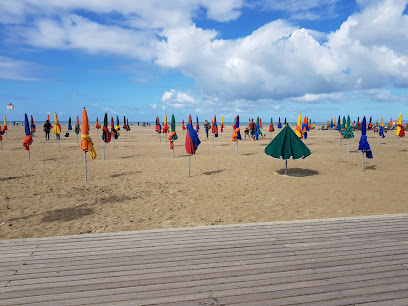
Omaha Beach Memorial
Experience the profound history and serenity of Omaha Beach Memorial, honoring the brave souls of D-Day and the enduring spirit of freedom.
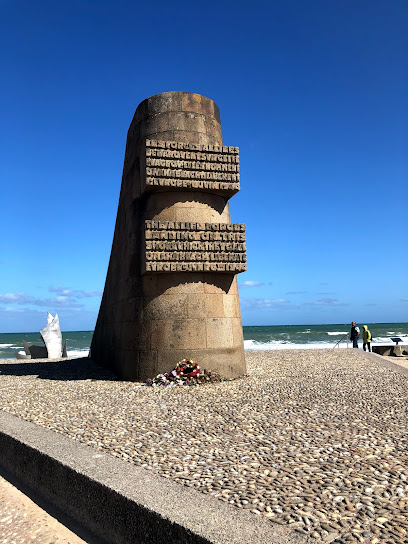
Overlord Museum
Explore the Overlord Museum, a captivating journey through the heroic stories of D-Day and the Allied forces in World War II.
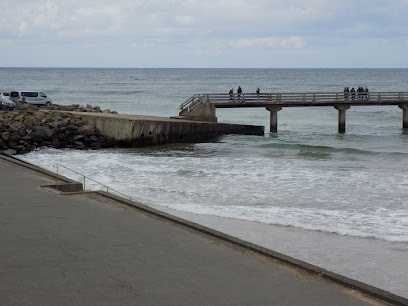
D-Day Museum
Explore the D-Day Museum in Arromanches-les-Bains to uncover the poignant history of World War II and the Normandy landings.

Utah Beach Landing Museum
Explore the Utah Beach Landing Museum, where history comes alive through exhibits dedicated to the D-Day landings and the heroes of World War II.
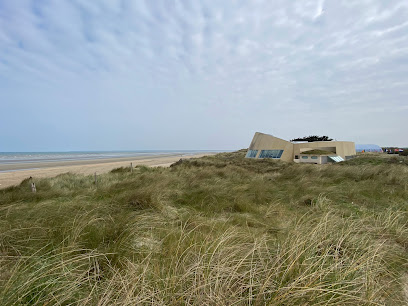
The Pointe Du Hoc
Explore the historic Pointe Du Hoc, where valor meets breathtaking views on the cliffs of Normandy, a must-visit for every traveler.
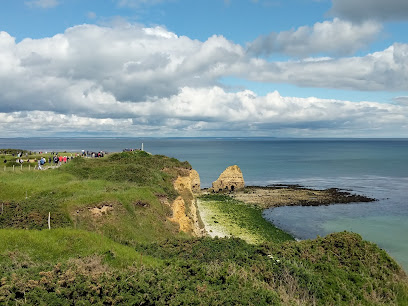
Memorial Pegasus
Explore the poignant history of D-Day at Memorial Pegasus, a war museum in Normandy that honors the bravery of the 6th Airborne Division.
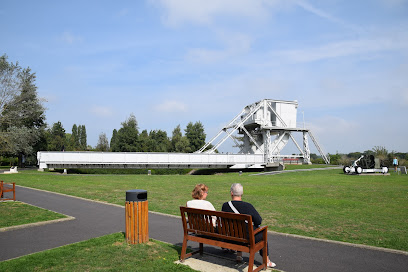
Museum and the Merville Battery site
Uncover the compelling history of World War II at the Merville Battery Museum, a vital site of the Normandy D-Day landings.

Memorial Museum of Omaha Beach
Explore the Memorial Museum of Omaha Beach, a heartfelt tribute to the courage of WWII soldiers and the pivotal D-Day landings in Normandy.
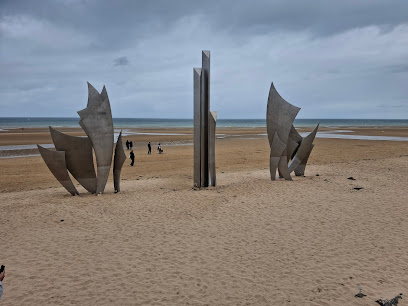
L'Abbaye-aux-Hommes
Discover the architectural beauty and historical significance of L'Abbaye-aux-Hommes in Caen, a must-see destination for every traveler.
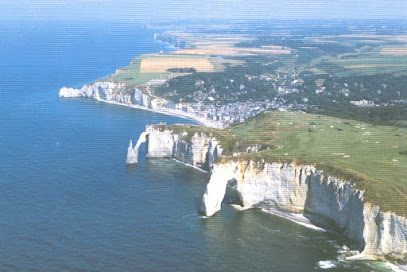
Museum of the Battle of Normandy
Explore the Museum of the Battle of Normandy and immerse yourself in the poignant history of D-Day and the events that defined World War II.
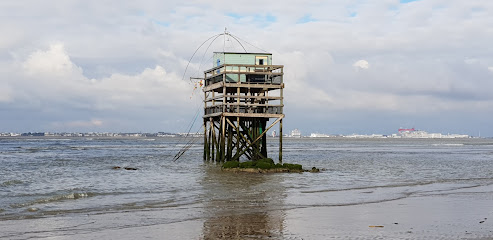
Normandy American Cemetery
Explore the Normandy American Cemetery, a solemn tribute to bravery and sacrifice during WWII, set against the breathtaking backdrop of Omaha Beach.
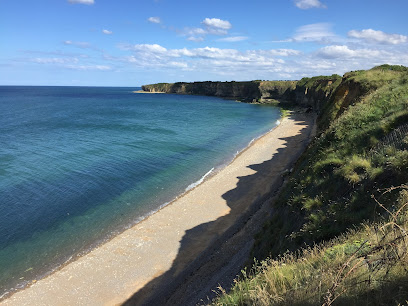
Omaha Beach Dog White
Discover the historic Omaha Beach in Normandy, where natural beauty meets poignant history, reflecting on D-Day's legacy while enjoying coastal serenity.
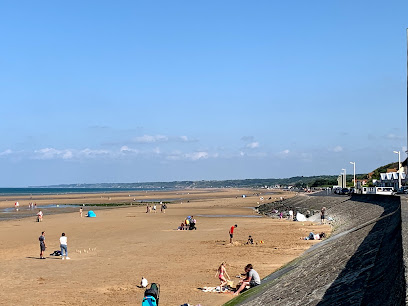
Plage du Butin
Plage du Butin: A picturesque beach in Honfleur offering sun, relaxation, and breathtaking views by the Seine.
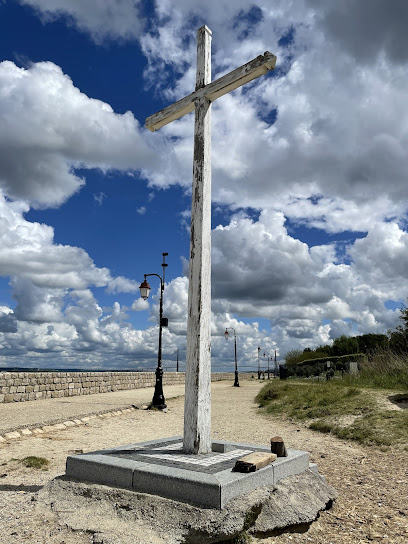
Abbaye de Jumièges
Explore the enchanting ruins of the Abbey of Jumièges, a historical gem in Normandy, perfect for history lovers and serene escapes.
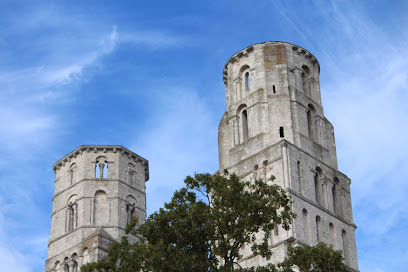
Unmissable attractions to see
Falaise d'Aval
Discover the stunning Falaise d'Aval in Étretat, France, a breathtaking coastal cliff famous for its iconic natural formations and scenic beauty.
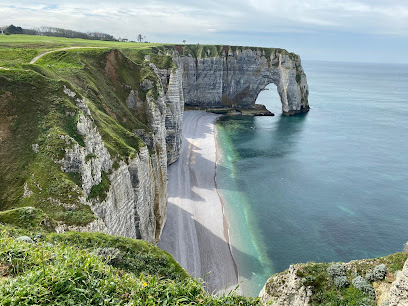
Grande Plage de Trouville
Experience the charm of Grande Plage de Trouville, a vibrant public beach in Trouville-sur-Mer, perfect for sunbathing, dining, and water sports.
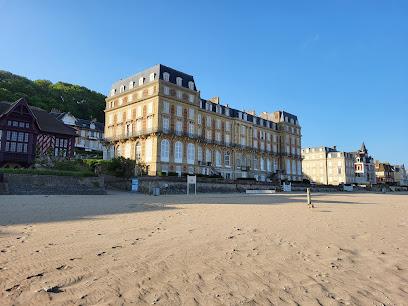
Abbaye de Jumièges
Explore the enchanting ruins of Abbaye de Jumièges, a historical landmark in Normandy, where beauty and history intertwine amidst serene landscapes.
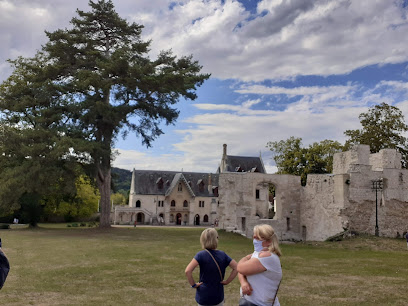
Plage du Butin
Discover the serene beauty of Plage du Butin, a captivating beach in Honfleur, perfect for relaxation and stunning views of the Seine River.
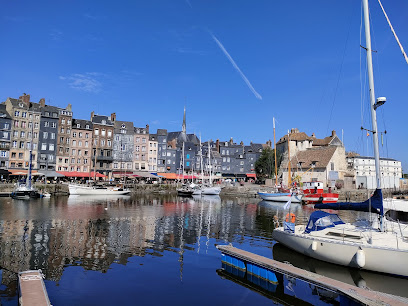
Plage de Trouville
Discover the beauty of Plage de Trouville, a stunning public beach in Normandy that offers leisure, adventure, and vibrant seaside culture.
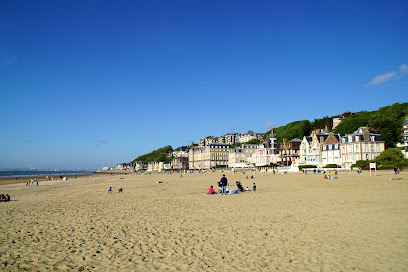
Utah Beach D-Day Landing Memorial and Monument of the Landing of the French 2nd Armored Division
Explore the historic Utah Beach D-Day Landing Memorial, honoring the courage of the French 2nd Armored Division on Normandy's iconic coastline.
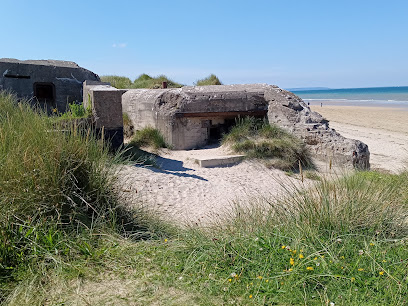
Public Garden of Bayeux
Explore the lush landscapes and serene beauty of the Public Garden of Bayeux, a botanical sanctuary in the heart of the city perfect for relaxation.
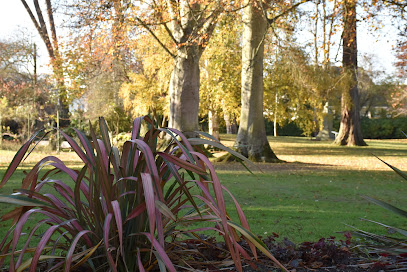
Site fortifié Hillman
Explore the historic Site fortifié Hillman in Normandy, where World War II history comes alive amidst stunning views and preserved fortifications.

Gouville-sur-Mer Beach
Discover the idyllic Gouville-sur-Mer Beach, a stunning escape on the Normandy coast offering sun-soaked sands and vibrant local culture.
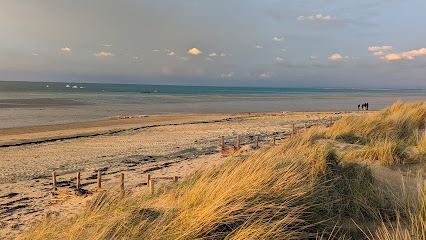
Greenwich Mean Time French Line
Explore the Greenwich Mean Time French Line in Villers-sur-Mer, a cultural landmark where history and stunning coastal views meet.
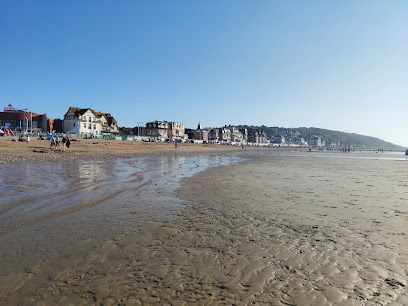
Villerville Beach
Discover the serene beauty of Villerville Beach in Normandy, where golden sands meet stunning cliffs in a charming coastal village.
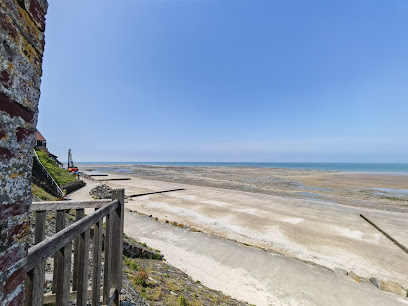
Jetée de Courseulles Sur Mer
Explore the beautiful Jetée de Courseulles Sur Mer, a serene coastal promenade offering stunning views and a taste of Normandy's charm.
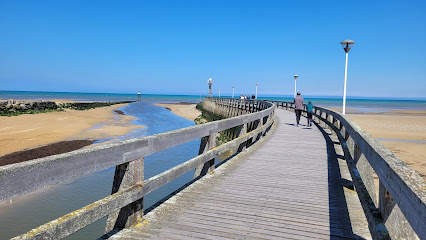
Arromanches Militaria
Discover the legacy of World War II at Arromanches Militaria, where history comes alive through unique military artifacts and memorabilia.
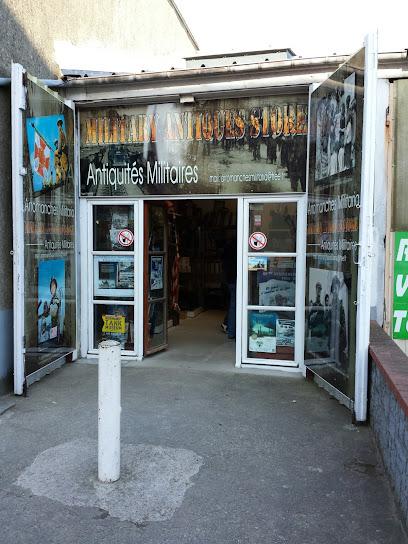
Musées America & Gold Beach
Explore the profound history of D-Day at Musées America & Gold Beach, a must-visit local history museum in Ver-sur-Mer, France.
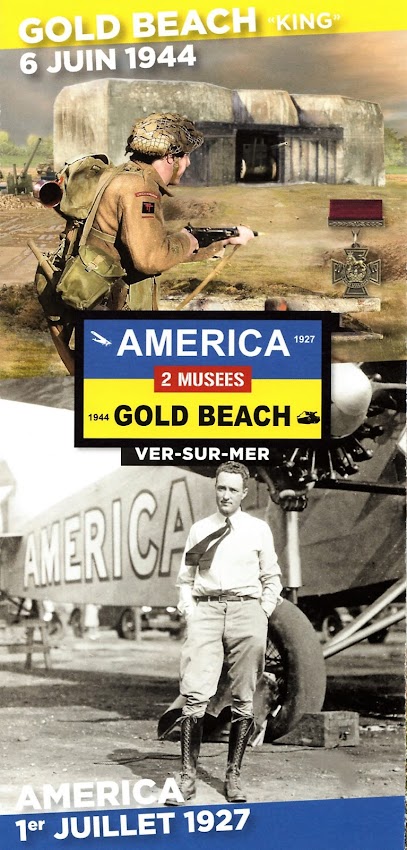
Old St. Stephen's Church
Explore the stunning Gothic architecture and rich history of Old St. Stephen's Church, a must-see landmark in Caen's cultural landscape.
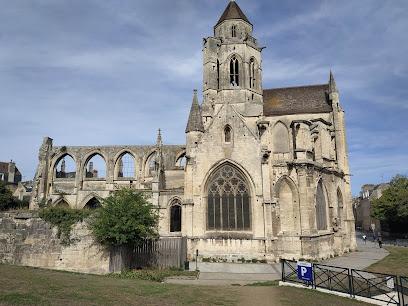
Essential places to dine
Oncle Scott's
Experience delightful dining at Oncle Scott's in Honfleur – where local ingredients meet culinary creativity.
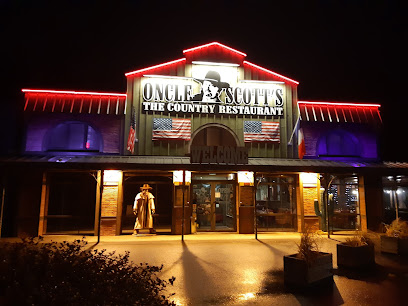
Brasserie de Normandie
Experience authentic French cuisine at Brasserie de Normandie in Le Havre – where local flavors meet vibrant atmosphere.
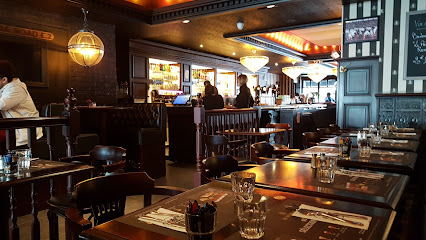
Restaurant Brasserie Bar La Crémaillère
Experience authentic French cuisine at Restaurant Brasserie Bar La Crémaillère in Saint-Laurent-sur-Mer, a culinary gem near Normandy's historic beaches.
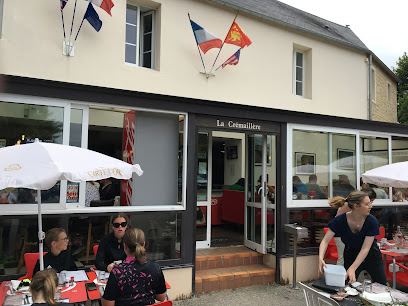
L'Arbre à Pin
Experience authentic Italian flavors at L'Arbre à Pin in Houlgate - where every meal is a journey to Italy.
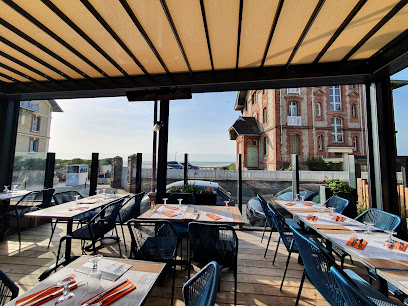
Restaurant La Maison Bleue
Experience authentic French cuisine with a focus on fresh seafood at Restaurant La Maison Bleue in Courseulles-sur-Mer.
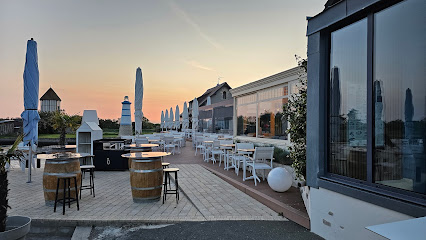
Restaurant L'Omaha
Experience authentic French cuisine at Restaurant L'Omaha in Saint-Laurent-sur-Mer—where every dish tells a story.
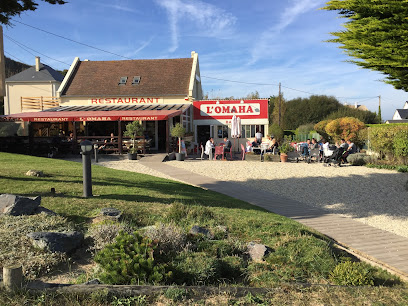
Casino Barrière Ouistreham
Experience thrilling gaming, exquisite dining, and vibrant nightlife at Casino Barrière Ouistreham – where every visit feels like a celebration.
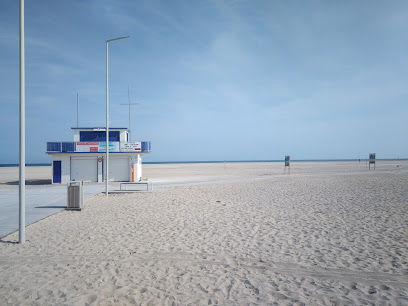
Les Relais d’Alsace
Experience authentic French cuisine at Les Relais d’Alsace in Caen - a delightful blend of tradition and flavor awaits every visitor.
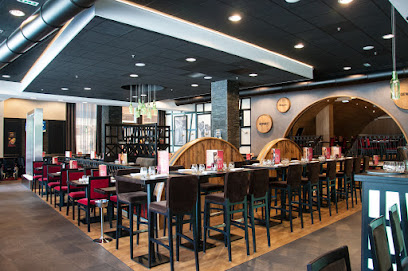
Le Goeland
Experience authentic French cuisine at Le Goeland in Ouistreham, where delightful dishes meet charming ambiance for an unforgettable dining experience.
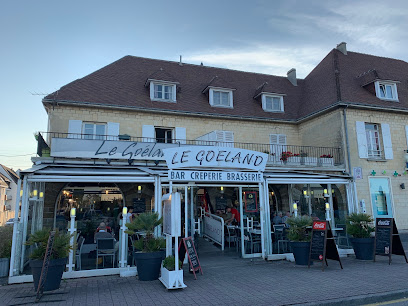
Sunset Beach
Discover Sunset Beach: A culinary gem in Benerville-sur-Mer offering delicious tapas and vibrant bar experiences with breathtaking coastal views.
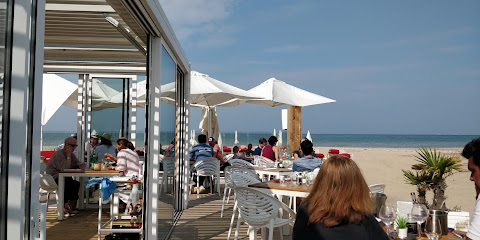
Les Tisons
Experience authentic French cuisine at Les Tisons in Ouistreham - a culinary haven for food lovers seeking delightful flavors.
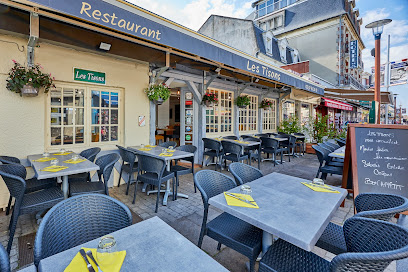
Le Quai Est
Experience authentic French cuisine with stunning harbor views at Le Quai Est in Courseulles-sur-Mer.
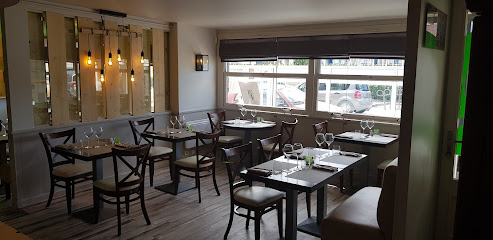
Hôtel - Restaurant : Au P'tit Mousse
Experience exquisite French dining and breathtaking marina views at Au P'tit Mousse in Courseulles-sur-Mer.
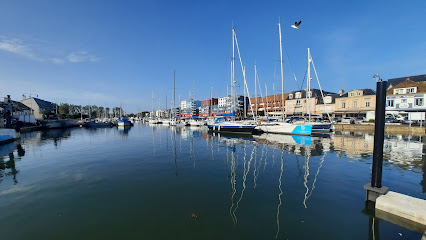
La Ferme de la Rançonnière - Hôtel de charme en Normandie
Experience rustic charm at La Ferme de la Rançonnière—your perfect escape in Normandy with exceptional hospitality and local cuisine.
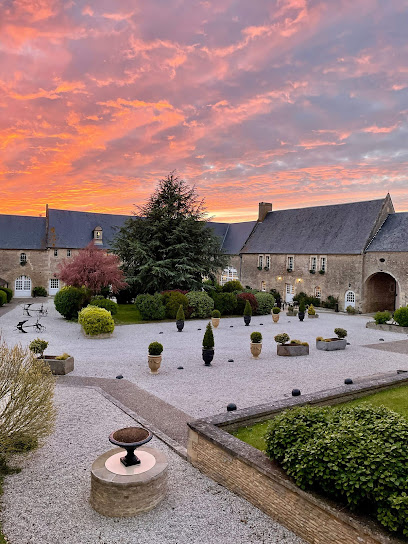
Restaurant la Voile Blanche - Ouistreham Riva Bella
Experience exquisite French cuisine and breathtaking marina views at La Voile Blanche in Ouistreham Riva Bella.
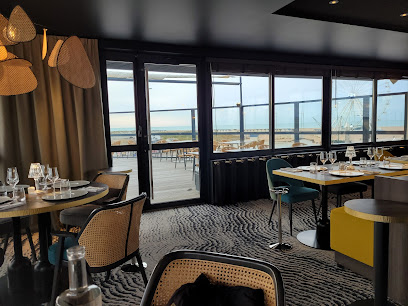
Markets, malls and hidden boutiques
IKEA Caen Fleury-sur-Orne
Explore IKEA Caen Fleury-sur-Orne for stylish Scandinavian furniture and home goods that transform your living space into a comfortable haven.
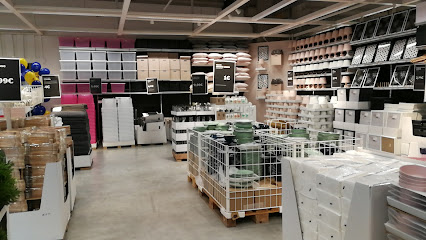
E.Leclerc BAYEUX CEDEX
Discover the culinary treasures of E.Leclerc Bayeux, where fresh produce, gourmet foods, and local delicacies await in a vibrant shopping atmosphere.
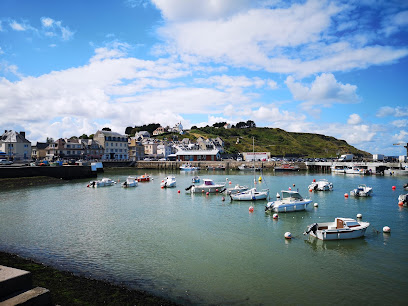
Primark
Explore Primark in Le Havre for affordable fashion and a vibrant shopping experience in the heart of the city.
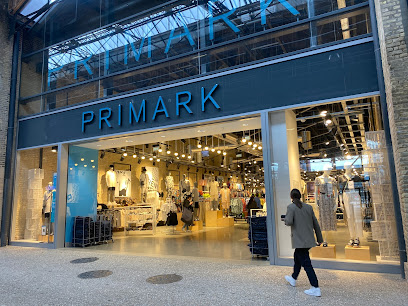
HONFLEUR NORMANDY OUTLET
Discover the charm of shopping at Honfleur Normandy Outlet, where discounts meet the beauty of Normandy’s historic town.
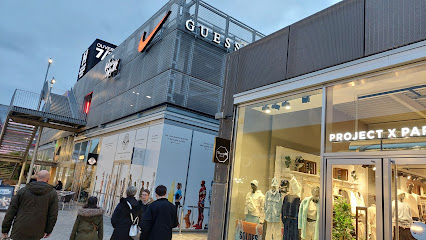
COTY
Explore COTY Shopping Mall in Le Havre - your ultimate destination for fashion, beauty, and home essentials.
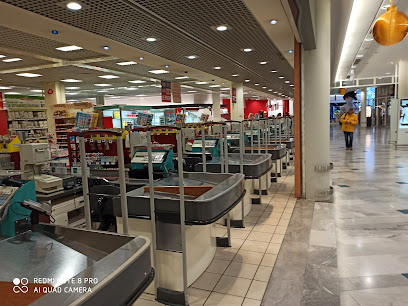
Carrefour
Discover Carrefour in Bayeux: A vibrant hypermarket offering fresh produce, local delicacies, and a mix of everyday essentials for every traveler.
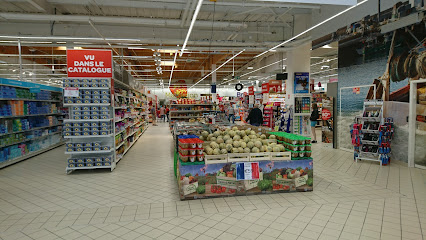
Galeries Lafayette Caen
Discover the elegance of Galeries Lafayette Caen, where fashion, beauty, and lifestyle converge in a stylish shopping experience.
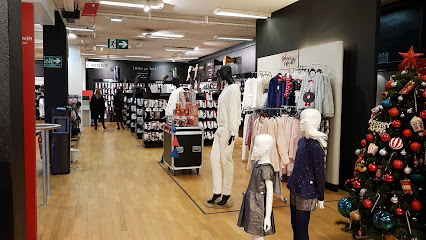
Intersport Gonfreville-l'Orcher
Explore top-notch sportswear and equipment at Intersport Gonfreville-l'Orcher, where quality meets style for every athlete.
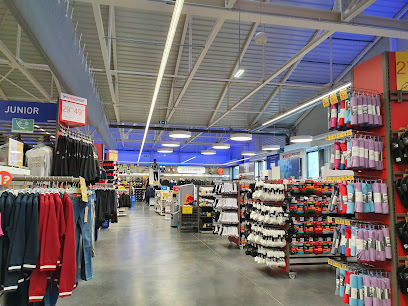
Printemps
Explore Printemps in Caen for the finest selection of fashion, beauty, and lifestyle products in a chic shopping destination.
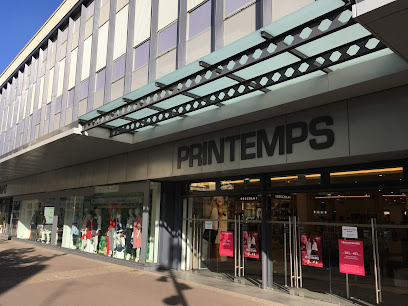
Centrakor Saint Contest
Discover stylish home goods and outdoor furniture at Centrakor Saint Contest, the perfect shopping spot for tourists seeking quality and charm.
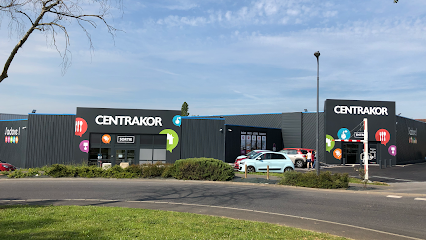
Centrakor Bayeux
Explore Centrakor Bayeux for exquisite home goods, outdoor furniture, and unique decor to enhance your living space and memories of France.

Action Pont L Eveque
Explore Action Pont L'Évêque for a unique shopping experience with a wide range of products from DIY supplies to home goods and more.
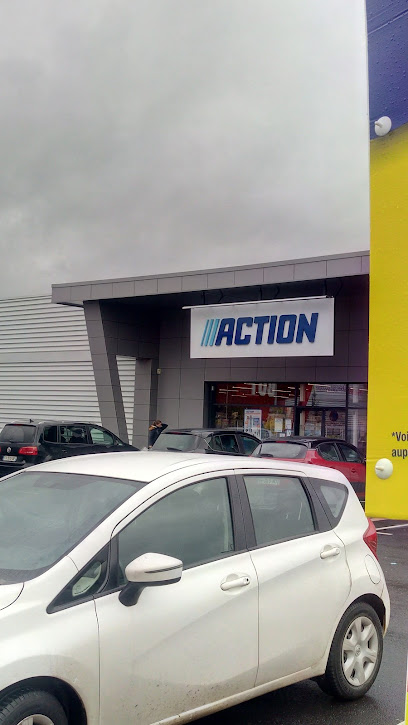
Smyths Toys Caen
Discover endless fun and imagination at Smyths Toys Caen, a premier toy store in Mondeville, offering a vast selection for children and families.
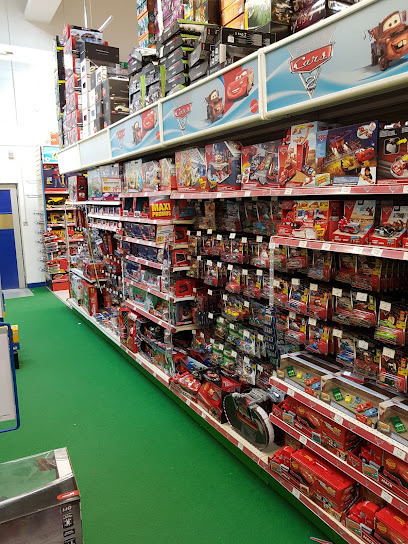
Les Sablés d'Asnelles
Experience the enchanting flavors of France at Les Sablés d'Asnelles, a delightful dessert shop in Asnelles offering exquisite pastries and refreshing teas.

FORUM+
Discover a world of home goods at FORUM+, where style meets functionality in Carpiquet's finest shopping destination.
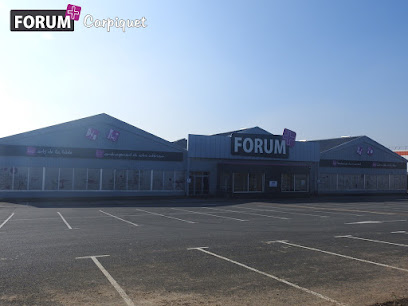
Essential bars & hidden hideouts
Restaurant Brasserie Bar La Crémaillère
Savor authentic French cuisine at Brasserie Bar La Crémaillère in Saint-Laurent-sur-Mer, a charming spot near the Normandy beaches.
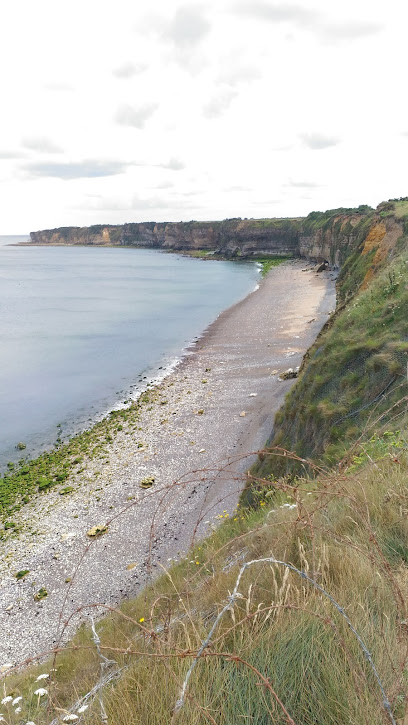
Restaurant L'Omaha
Experience authentic French cuisine at Restaurant L'Omaha in Saint-Laurent-sur-Mer, where flavors and hospitality meet by the coast.
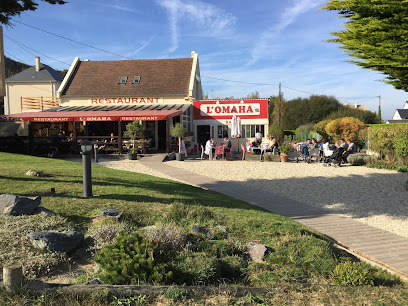
L'Hydropathe
Discover the essence of Caen at L'Hydropathe, where fine wines and exquisite cuisine come together in a cozy, inviting atmosphere.
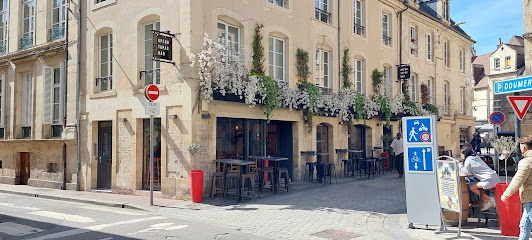
Sunset Beach
Discover the flavors of the sea at Sunset Beach, a charming restaurant and tapas bar in Benerville-sur-Mer with stunning ocean views.
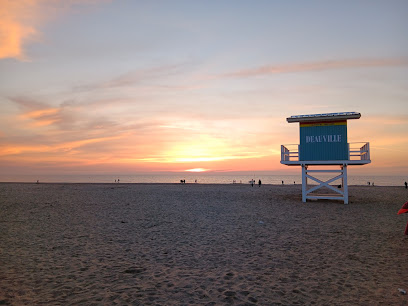
Le Trappist
Discover the lively atmosphere and extensive beer selection at Le Trappist, a must-visit beer hall in Caen, France.
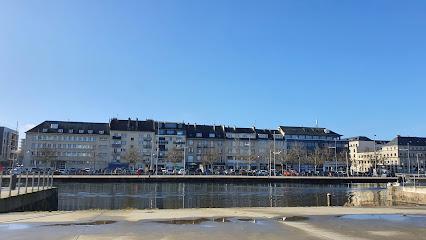
L'Écailler
Savor the flavors of the sea at L'Écailler, a top-tier seafood restaurant in Port-en-Bessin-Huppain, where French culinary tradition meets fresh local ingredients.
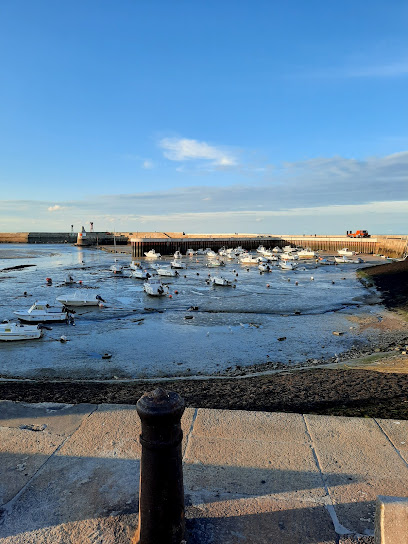
La Sapinière
Discover La Sapinière, a charming restaurant and brewery in Saint-Laurent-sur-Mer, offering exquisite local cuisine and craft beers for an unforgettable dining experience.
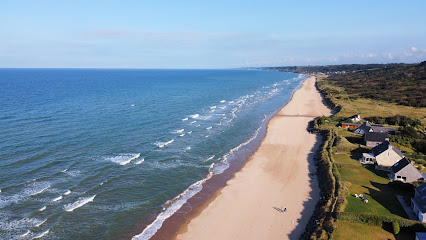
D-DAY House
Experience the rich history of D-Day while savoring exquisite seafood at D-DAY House in Saint-Laurent-sur-Mer.

Papa Jerry
Discover the lively ambiance and diverse drink selection at Papa Jerry, a must-visit bar in the heart of Caen for tourists seeking a vibrant night out.
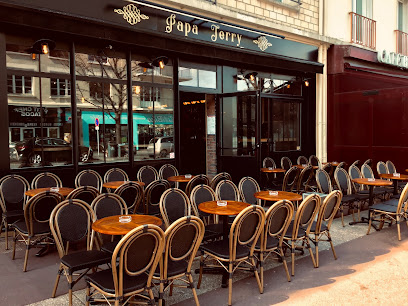
Le Conquérant
Discover Le Conquérant, a cozy Irish pub in Bayeux, where traditional hospitality meets local charm, perfect for unwinding after a day of exploration.
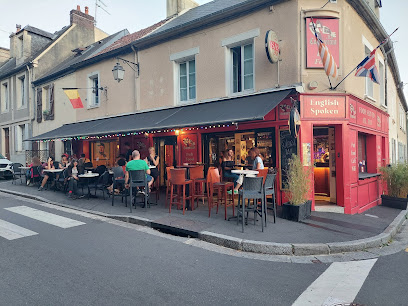
Au Chef Raide
Experience the vibrant nightlife at Au Chef Raide, a charming bar in Caen offering exquisite drinks and a lively atmosphere.
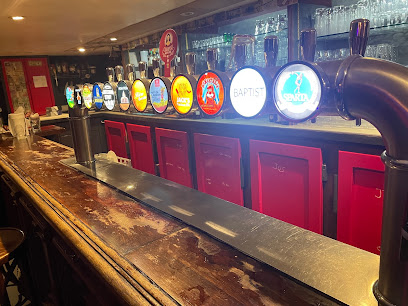
La pagaille
Experience the vibrant nightlife at La Pagaille, a lively bar in Caen, offering a diverse drink selection and an inviting atmosphere.
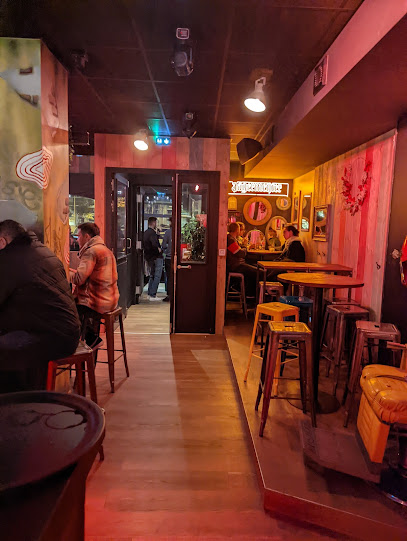
La Gitane
Discover La Gitane, a cozy bar tabac and Irish pub in Bayeux, where local drinks and friendly atmospheres await every traveler.
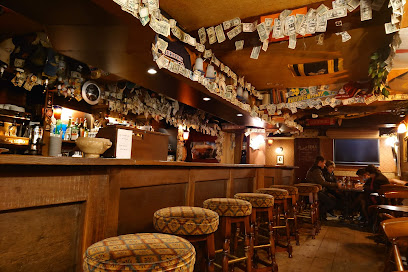
Au Fût et à mesure Le Havre
Discover a lively beer hall in Le Havre offering a vibrant mix of craft beers, live music, and a welcoming atmosphere.
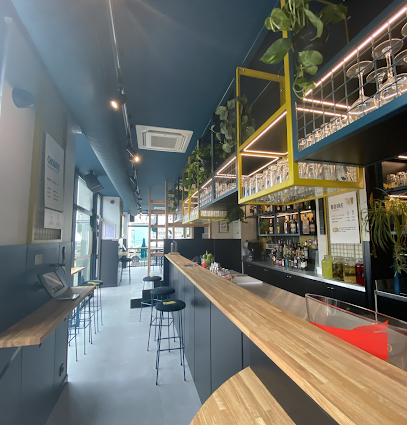
Speakeasy
Experience the charm of the Prohibition era at Caen's Speakeasy, where expertly crafted cocktails and an intimate atmosphere await.
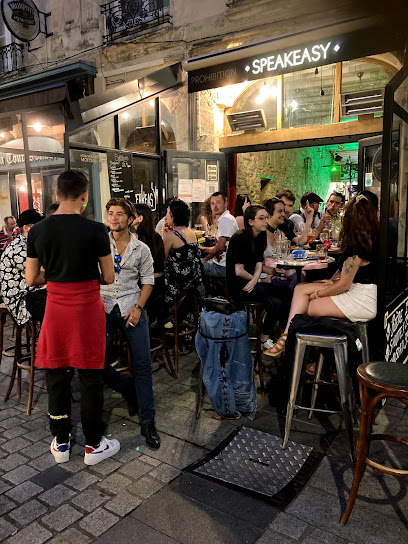
Local Phrases about Normandy Beaches
-
- HelloBonjour
[bon-zhoor] - GoodbyeAu revoir
[oh ruh-vwahr] - YesOui
[wee] - NoNon
[noh] - Please/You're welcomeS'il vous plaît / De rien
[seel voo pleh / duh ryen] - Thank youMerci
[mehr-see] - Excuse me/SorryExcusez-moi / Désolé
[ex-kew-zay mwah / day-zoh-lay] - How are you?Comment ça va?
[koh-mohn sah vah] - Fine. And you?Bien. Et vous?
[byen. ay voo] - Do you speak English?Parlez-vous anglais?
[par-lay voo ahn-glay] - I don't understandJe ne comprends pas
[zhuh nuh kohm-prahn pah]
- HelloBonjour
-
- I'd like to see the menu, pleaseJe voudrais voir le menu, s'il vous plaît
[zhuh voo-dray vwahr luh muh-nyoo, seel voo pleh] - I don't eat meatJe ne mange pas de viande
[zhuh nuh mahnzh pah duh vyand] - Cheers!Santé!
[sahn-tay] - I would like to pay, pleaseJe voudrais payer, s'il vous plaît
[zhuh voo-dray pay-ay, seel voo pleh]
- I'd like to see the menu, pleaseJe voudrais voir le menu, s'il vous plaît
-
- Help!Au secours!
[oh suh-koor] - Go away!Allez-vous en!
[ah-lay voo zahn] - Call the Police!Appelez la police!
[ah-peh-lay lah poh-lees] - Call a doctor!Appelez un médecin!
[ah-peh-lay uh may-day-sahn] - I'm lostJe suis perdu
[zhuh swee pair-doo] - I'm illJe suis malade
[zhuh swee mah-lahd]
- Help!Au secours!
-
- I'd like to buy...Je voudrais acheter...
[zhuh voo-dray zash-tey...] - I'm just lookingJe regarde juste
[zhuh ruh-gard zhust] - How much is it?Combien ça coûte?
[kohm-byen sah koot] - That's too expensiveC'est trop cher
[say troh shair] - Can you lower the price?Pouvez-vous baisser le prix?
[poo-vez voo bay-say luh pree]
- I'd like to buy...Je voudrais acheter...
-
- What time is it?Quelle heure est-il?
[kell eur eh-teel] - It's one o'clockIl est une heure
[eel eh tewn eur] - Half past (10)Dix heures et demi
[dees eur ay dem-ee] - MorningMatin
[mah-tan] - AfternoonAprès-midi
[ah-prey-mee-dee] - EveningSoir
[swahr] - YesterdayHier
[yehr] - TodayAujourd'hui
[oh-zhoor-dwee] - TomorrowDemain
[duh-mahn] - 1Un
[uhn] - 2Deux
[duh] - 3Trois
[twah] - 4Quatre
[kah-truh] - 5Cinq
[sank] - 6Six
[sees] - 7Sept
[sett] - 8Huit
[weet] - 9Neuf
[nuf] - 10Dix
[dees]
- What time is it?Quelle heure est-il?
-
- Where's a/the...?Où est le/la...?
[oo eh luh/lah] - What's the address?Quelle est l'adresse?
[kell eh la-dress] - Can you show me (on the map)?Pouvez-vous me montrer (sur la carte)?
[poo-vez voo muh mohn-tray (soor lah kart)] - When's the next (bus)?Quand est le prochain (bus)?
[kahn eh luh proh-shahn (bus)] - A ticket (to ....)Un billet (pour ....)
[uhn bee-yay (poor)]
- Where's a/the...?Où est le/la...?
History of Normandy Beaches
-
Normandy Beaches, situated along the northern coast of France, are not only stunningly beautiful but also saturated with historical significance. From the medieval era to the modern day, Normandy has been a focal point of major historical events that have shaped the course of European history.
-
Normandy derives its name from the Norsemen, or Vikings, who began raiding the area in the 9th century. The Treaty of Saint-Clair-sur-Epte in 911 granted land to the Viking leader Rollo, marking the beginning of the Duchy of Normandy. These Norse settlers blended with the local population, leaving a lasting cultural legacy evident in the region's architecture and place names.
-
In 1066, Duke William of Normandy, later known as William the Conqueror, launched an invasion of England. The successful campaign culminated in the Battle of Hastings, where King Harold II was defeated. This event dramatically altered the course of English history, introducing Norman culture and feudal systems to England.
-
On June 6, 1944, the beaches of Normandy were the landing sites for Operation Overlord, the Allied invasion of Nazi-occupied Europe. Known as D-Day, this monumental event involved over 156,000 troops from the United States, the United Kingdom, Canada, and other Allied nations. Key beaches such as Utah, Omaha, Gold, Juno, and Sword remain etched in history for their strategic importance and the bravery displayed by the soldiers.
-
Following the liberation of Normandy and the end of World War II, significant efforts were made to rebuild the region. Numerous memorials, museums, and cemeteries were established to honor the fallen. Sites like the Normandy American Cemetery and Memorial in Colleville-sur-Mer serve as poignant reminders of the sacrifices made for freedom.
-
Today, Normandy Beaches attract millions of visitors annually who come to pay homage to history and enjoy the region’s natural beauty. The area is rich with cultural offerings, including festivals, local cuisine, and historical tours. The legacy of its past, combined with vibrant contemporary life, makes Normandy a compelling destination for travelers.
Normandy Beaches Essentials
-
Normandy Beaches are located in the Normandy region of France. The nearest major airport is Paris Charles de Gaulle Airport (CDG), approximately 260 kilometers away. From Paris, you can take a train to Normandy; the journey typically takes around 2 to 3 hours, with frequent services to cities like Caen, Bayeux, and Cherbourg. Alternatively, you can rent a car and drive, which offers flexibility and the opportunity to explore the scenic French countryside.
-
Public transportation in Normandy is reliable and convenient. Trains connect major towns and cities, while local buses serve smaller communities and tourist sites. Taxis are available but can be expensive for long distances. Renting a car is a popular option for exploring the region at your own pace, especially to reach more remote beaches and historical sites. Biking is also a great way to travel around, with many well-marked trails.
-
The official currency in France is the Euro (EUR). Credit and debit cards are widely accepted in hotels, restaurants, and shops. However, it's advisable to carry some cash for smaller establishments, local markets, and rural areas. ATMs are readily available in towns and cities. Inform your bank of your travel plans to avoid any issues with card transactions.
-
Normandy is generally a safe region for tourists. Standard precautions should be taken, such as avoiding poorly lit areas at night and keeping an eye on personal belongings in crowded places. There are no specific high-crime areas targeting tourists, but it is always best to stay vigilant and be aware of your surroundings. Petty crimes like pickpocketing can occur, particularly in tourist-heavy areas.
-
In case of emergency, dial 112 for immediate assistance, which is the pan-European emergency number. Normandy has well-equipped medical facilities and local police stations. It is recommended to have travel insurance that covers medical emergencies. Pharmacies are available in most towns for minor health issues, and many pharmacists speak English.
-
Fashion: Do dress comfortably and appropriately for the weather. Casual wear is acceptable, but avoid overly revealing clothing when visiting memorials or churches. Religion: Do respect local customs and traditions. Remove hats and remain quiet in churches and other places of worship. Public Transport: Do validate your tickets before boarding trains and buses. Don’t eat large meals or make loud noises on public transport. Greetings: Do greet people with a polite 'Bonjour' (Good day) and a handshake. Eating & Drinking: Do try local specialties like Camembert cheese and Calvados. Don’t rush through meals; savor and enjoy the dining experience.
-
To experience Normandy Beaches like a local, visit in the early morning or late afternoon to avoid crowds. Explore local markets for fresh produce and regional specialties. Engage with locals, who are often willing to share historical insights and personal stories. Rent a bike to explore the scenic coastal paths and hidden gems. Don’t miss out on visiting the lesser-known beaches and memorials for a more intimate experience.
Trending Landmarks in Normandy Beaches
-
Deauville Beach
-
Omaha Beach Memorial
-
Overlord Museum
-
D-Day Museum
-
Utah Beach Landing Museum
-
The Pointe Du Hoc
-
Memorial Pegasus
-
Museum and the Merville Battery site
-
Memorial Museum of Omaha Beach
-
L'Abbaye-aux-Hommes
-
Museum of the Battle of Normandy
-
Normandy American Cemetery
-
Omaha Beach Dog White
-
Plage du Butin
-
Abbaye de Jumièges
Nearby Cities to Normandy Beaches
-
Things To Do in Gorey
-
Things To Do in St. Clement
-
Things To Do in Trinity
-
Things To Do in St. Helier
-
Things To Do in St. Lawrence
-
Things To Do in St. Aubin
-
Things To Do in St. Peter
-
Things To Do in St. Brelade
-
Things To Do in St. Ouen
-
Things To Do in Rouen
-
Things To Do in St. Anne
-
Things To Do in Saint-Malo
-
Things To Do in St. Sampson
-
Things To Do in St. Peter Port
-
Things To Do in St. Martin













